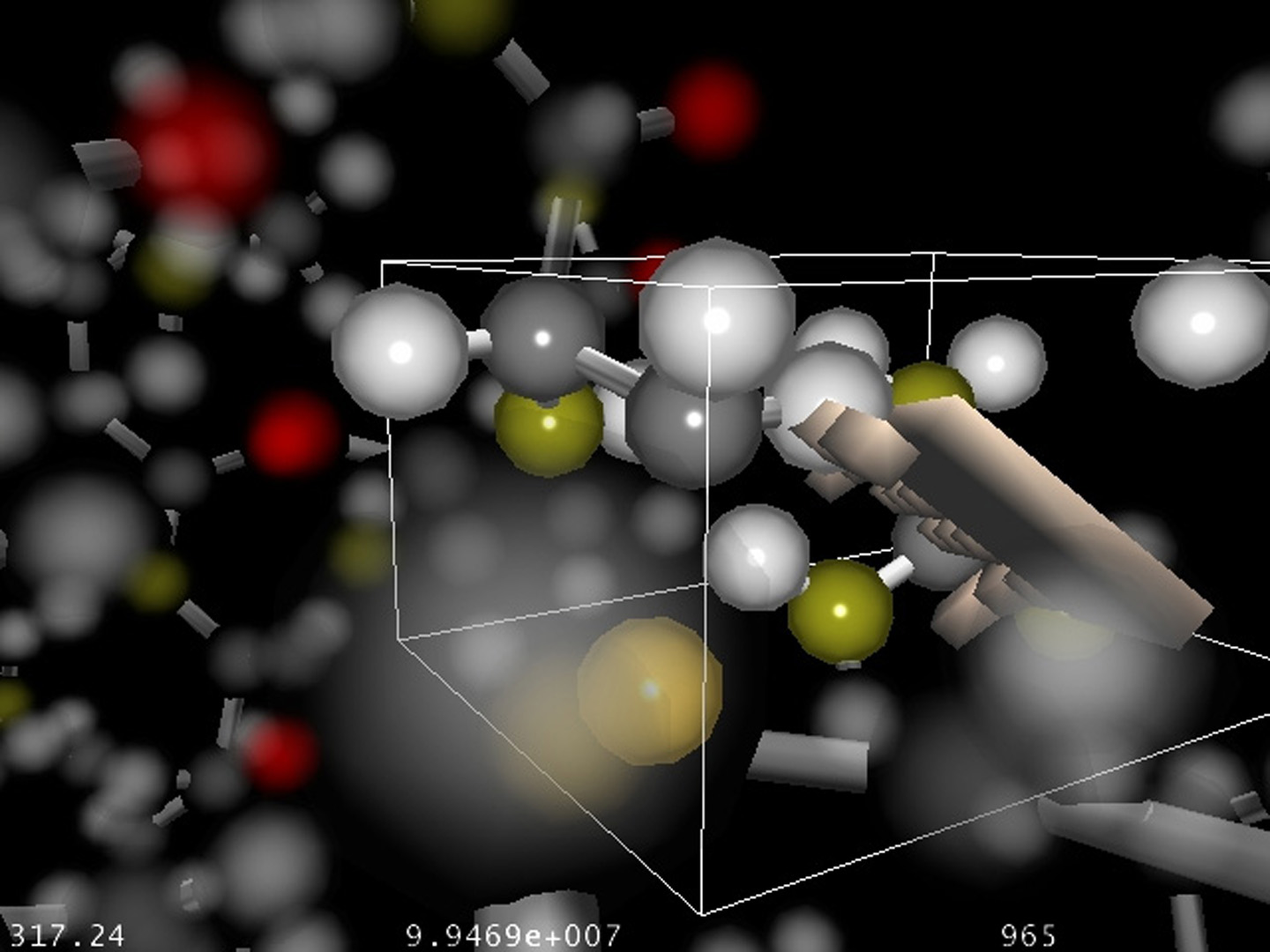“Emphasizing the area of interest using real-time shaders” by Chastine, Brooks, Zhu, Owen, Harrison, et al. …
Conference:
Type(s):
Title:
- Emphasizing the area of interest using real-time shaders
Presenter(s)/Author(s):
Abstract:
This poster presents a new technique for visualizing area of interest in a collaborative virtual environment for molecular modeling. The environment allows multiple participants to interact with molecular models while receiving real-time energy feedback from a molecular mechanics simulator. Interaction within the environment occurs primarily via a data glove and is visualized through an HMD (Head-Mounted Display). To interact with the molecule, users define an area of interest by pinching (index to thumb) and then dragging in 3D space. Scientists can then grab within the box to manipulate the molecule. When working with complex molecular models, however, where either the atom count is high, or atoms are clustered together, the area of interest may be occluded by atoms or bonds that fall within the line of site, making it difficult, if not impossible to view the area (Figure 1). While several physically-correct depth-of-focus algorithms have been created [Haeberli and Akeley 1990], we were interested in an efficient approximation specifically designed for this environment.
References:
1. Haeberli, P., Akeley, K., The accumulation buffer: hardware support for high-quality rendering. Proceedings of the 17th Annual Conference on Computer Graphics and Interactive Techniques (SIGGRAPH), Dallas TX, 1990.





